Our moon has orbited Earth for the last four billion years and it won’t be alone from next week as the asteroid named ‘2024 PT5’ will follow it on its journey.
Speaking about it to Space, Professor Carlos de la Fuente Marcos said: “The object that is going to pay us a visit belongs to the Arjuna asteroid belt, a secondary asteroid belt made of space rocks that follow orbits very similar to that of Earth at an average distance to the sun of about 93 million miles [150 million kilometers].
“Objects in the Arjuna asteroid belt are part of the near-Earth object population of asteroids and comets.”
Marcos is the research lead and has a team of scientists working beside him.
The Arjuna asteroid belt is a diverse jumble of space rocks and due to the orbit being close to ours it is estimated to orbit Earth again in January.
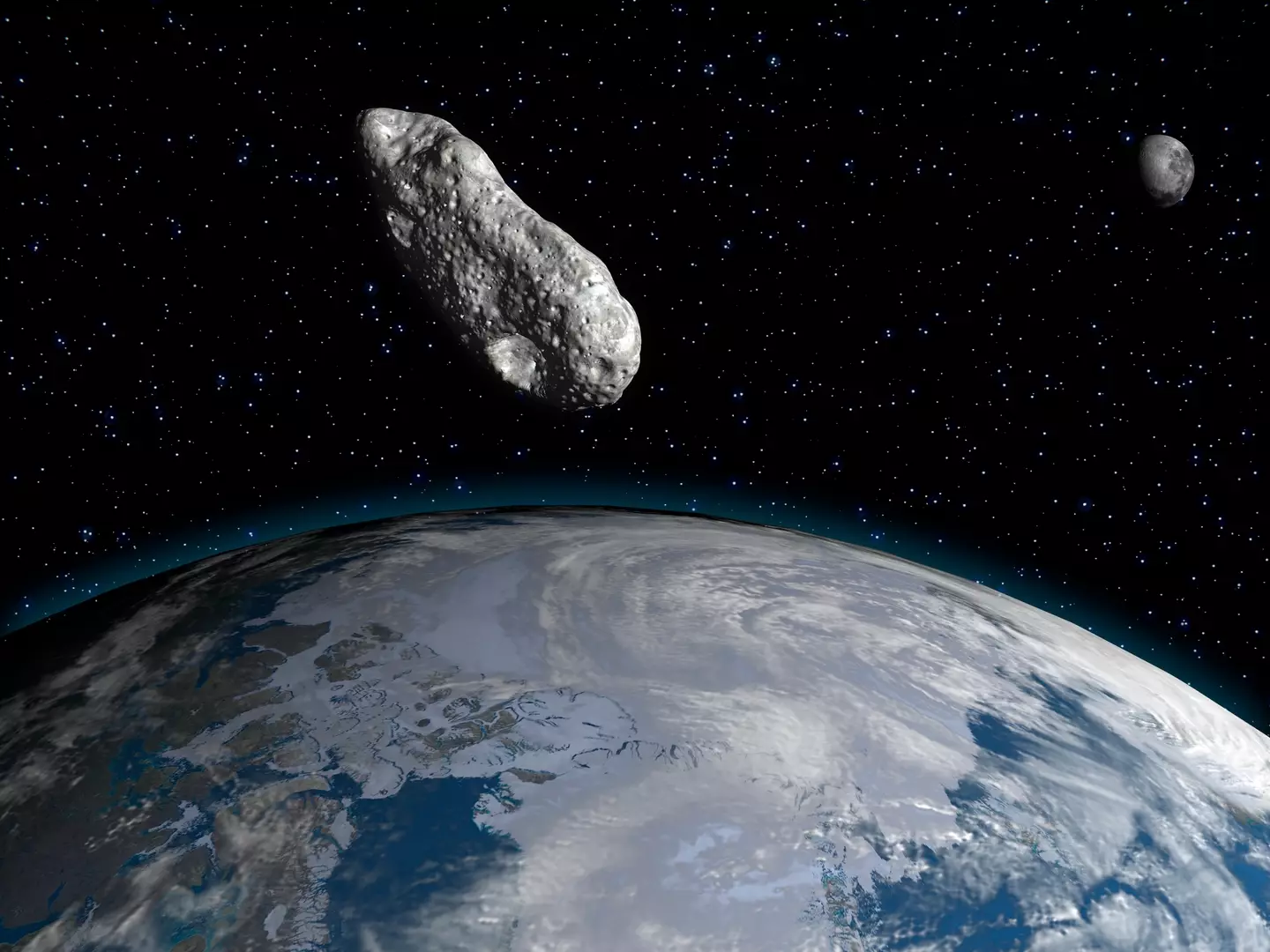
An asteroid dubbed 2024 PT5 is set to orbit the earth like a ‘mini-moon’ next week until the end of November (Getty stock image)
The tiny asteroid will be just 2.8 million miles away from earth, which may sound incredibly far, but in terms of space, it is actually a lot closer than you’d think – and it will travel at 2,200mph.
To put that into perspective the International Space Station orbits earth at 17,500mph.
He continued: “Under these conditions, the geocentric energy of the object may grow negative, and the object may become a temporary moon of Earth. This particular object will undergo this process starting next week and for about two months.
Adding: “It will not follow a full orbit around Earth.
“You may say that if a true satellite is like a customer buying goods inside a store, objects like 2024 PT5 are window shoppers.”

The asteroid won’t be visible by eye or even through your standard telescope (Getty stock image)
So how can we spot it?
Well, unfortunately you can’t… or at least not with household items like a telescope your mom bought you or a pair of binoculars.
No, 2024 PT5 is much harder to spot due to its size.
Marcos added: “The object is too small and dim for typical amateur telescopes and binoculars. However, the object is well within the brightness range of typical telescopes used by professional astronomers.
“A telescope with a diameter of at least 30 inches plus a CCD or CMOS detector are needed to observe this object, a 30 inches telescope and a human eye behind it will not be enough.”
Featured Image Credit: Roberto Machado Noa via Getty Images/Xia Yuan via Getty Images
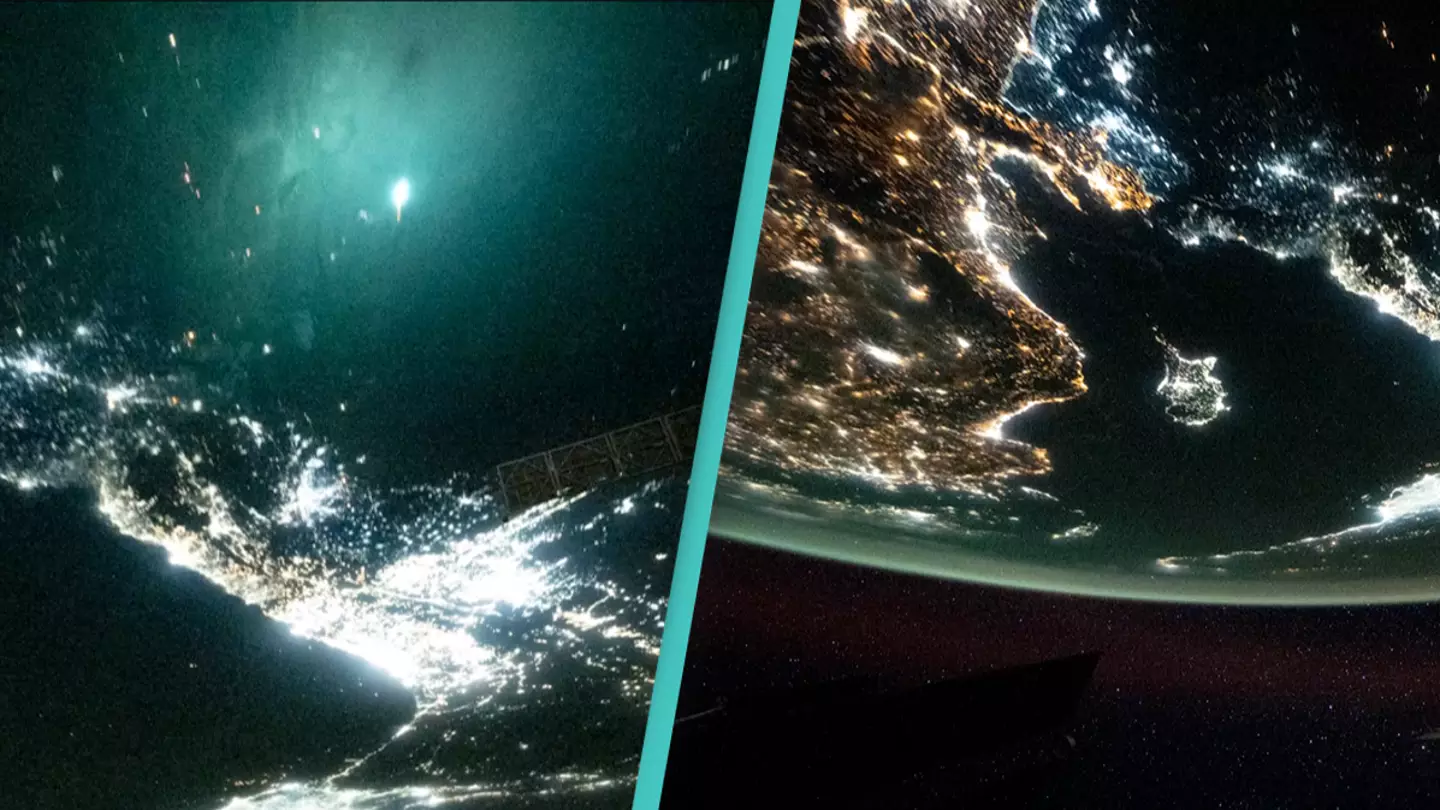
A mysterious green flash has bewildered an astronaut currently orbiting earth.
Aboard the International Space Station (ISS) NASA astronaut Matthew Dominick set up a timelapse to capture extraordinary footage of Earth from over North Africa, but when he reviewed the footage he discovered something out-of-this-world… literally.
The footage shows brilliant ‘paparazzi-like’ lights flicker across the continent, which are actually lightning storms – and they can be seen from space pretty much around the clock.
A bit of trivia for you, according to the Met Office, the UK’s national weather and climate service, thunderstorms are much more common than you’d think.
It wrote: “Thunderstorms are common occurrences on Earth. It is estimated that a lightning strike hits somewhere on the Earth’s surface approximately 44 times every second, a total of nearly 1.4 billion lightning strikes every year.”
So by the time you finish brushing your teeth – two minutes if you’re doing them right – lightning would have struck the ground somewhere on the planet more than 5,000 times.
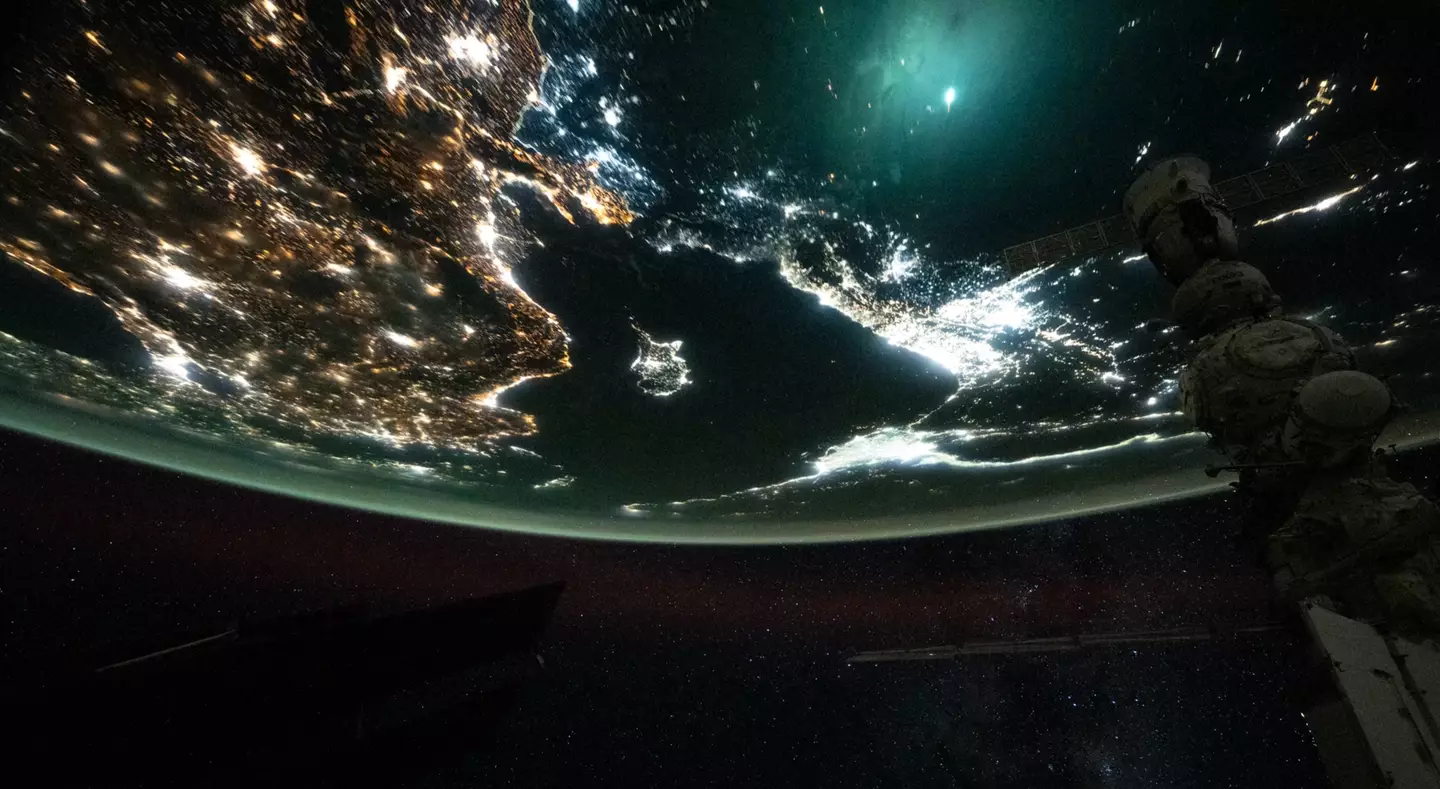
The mysterious green flash starts to build in the timelapse (Twitter/@dominickmatthew)
But it wasn’t the storms that sparked the NASA astronaut’s curiosity, but a bolide.
Taking to Twitter, he wrote: “I showed this to a couple of friends yesterday to see what they thought. They both thought it was a meteor exploding in the atmosphere – a rather bright one called a bolide.
“Timelapse is slowed down to one frame per second for you to see it streaking and then exploding.”
A bolide is an extremely bright meteor that explodes when it breaks into our planet’s atmosphere.
He continued: “Timelapse was setup over Northern Africa where it was very dark with lightning. I got greedy with ISO (25600) and when the timelapse got to Cairo the cities were overexposed.
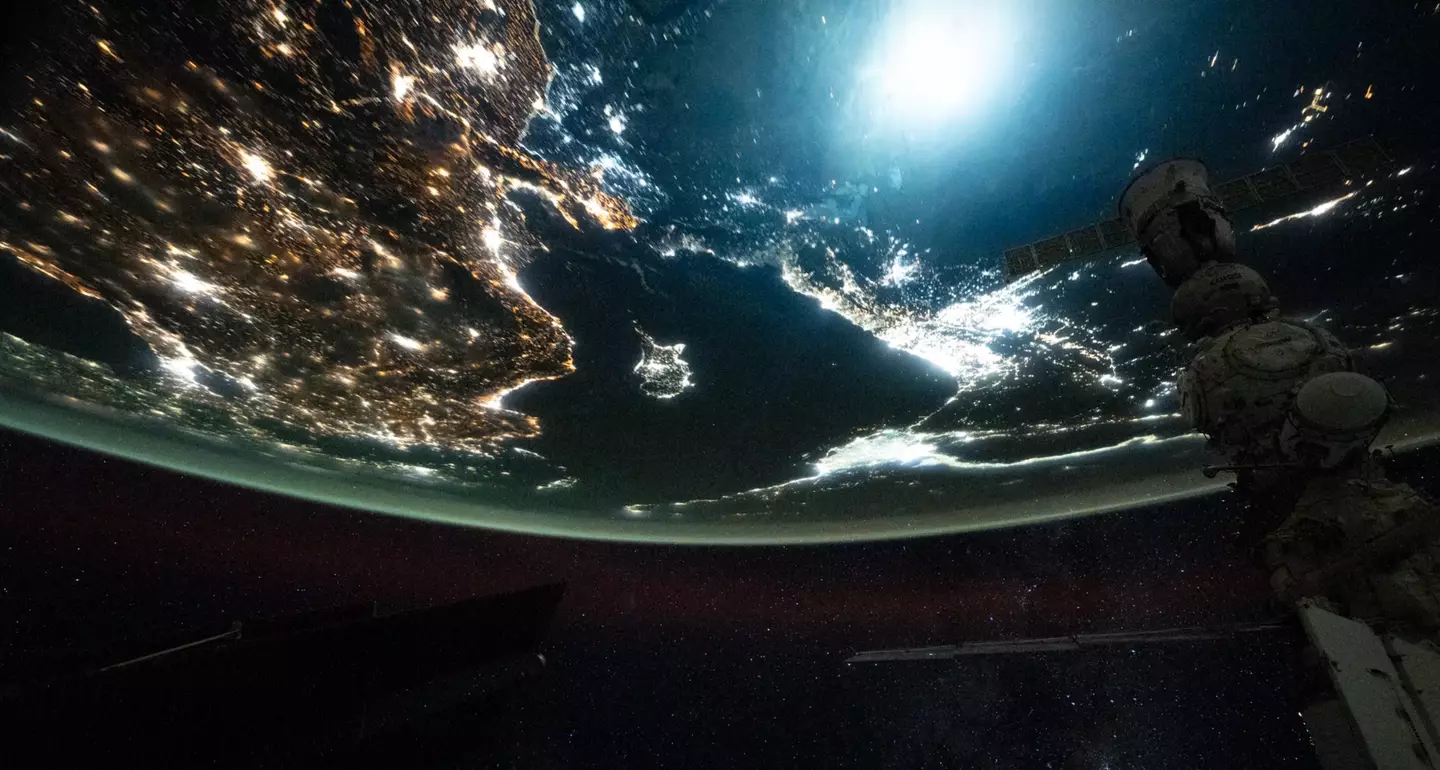
It builds into a brilliant flash of light (Twitter/@dominickmatthew)
“I was greedy because I wanted the Milky Way Core. When I went to review the shots afterwards I found the bolide.”
He went on: “For those asking about date and time for meteor tracking: The meteor exploded on 2 Sept 2024 at 20:12:20 GMT based on the clock in the camera which may be off by 30s or so either side.”
In both recordings you can see the meteor hurtling towards Earth, before breaking through the planet’s atmosphere – at which point it bursts into flames over over Cairo, the capital city of Egypt.
The astronaut, who is part of NASA’s SpaceX Crew-8 mission which saw him launch to the ISS in March, took to the social media platform to ask users: “If you know about these type of meteors please chime in. I am curious to know more.”
Featured Image Credit: X/@dominickmatthew
.webp)
We’ll long be learning about planets and the solar system, but so far scientists have found some pretty amazing discoveries.
From finding planets twice the size of Earth and incomprehensibly large black holes, to the James Webb Space Telescope detecting light on an Earth-like planet, there’s no way of knowing what’s going to be identified next.
But one discovery of note in recent months was that of the remains of a ‘buried planet’ within Earth.
Seismologists discovered two continent-sized ‘basal mantle anomalies’ – blobs beneath the Earth’s crust to you and me – beneath the Pacific and Africa.
They’re denser than their surroundings which suggests they’re made out of different material to the rest of the Earth’s mantle – and now we might have a good idea of how they got there.
The researchers reckon it could be due to a planet called Theia smashing into the Earth 4.5 billion years ago, with the impact forming the Moon.
In a theoretical article published to Nature, eleven writers put forward evidence that this different mantle within our Earth could be an ancient planet that crashed into Earth, forming the Moon out of its flying pieces.
By observing the anomalies in the Earth’s mantle and comparing them to matter surrounding them, the researchers suggest that they may be buried remnants of Theia mantle material that has been preserved deep in the Earth billions of years after the Moon-forming impact.
.jpg)
Theia could have smashed into Earth 4.5 billion years ago. (ARTUR PLAWGO/SCIENCE PHOTO LIBRARY/Getty)
The research team used giant-impact simulations which were able to show that a part of Theia’s mantle could have entered proto-Earth’s lower mantle.
They could see that Theia would have had a higher density as the Moon is more iron-rich.
This means that if there are samples that match the density and composition of Theia within the Earth, it proves the theory that Theia once crashed into Earth which created our Moon.
The team wrote that Theia’s matter surviving deep within Earth would ‘be a natural consequence of the Moon-forming giant impact’.

Pexels
They concluded in the study: “Because giant impacts are common at the end stages of planet accretion, similar mantle heterogeneities caused by impacts may also exist in the interiors of other planetary bodies.”
The revelation left those of us who don’t have astrophysics PhDs scratching their heads.
One commenter marvelled at the time: “The Earth kinda is like a lava lamp. Only it takes really long for the blobs to move around.
“I remember watching a documentary about what’s going on below Yellowstone and the grand Tetons and they also basically said what’s going on below is kind of like a lava lamp.”
I mean, that’s one way of looking at it.
Featured Image Credit: Getty Stock Images/YouTube/NPG Press
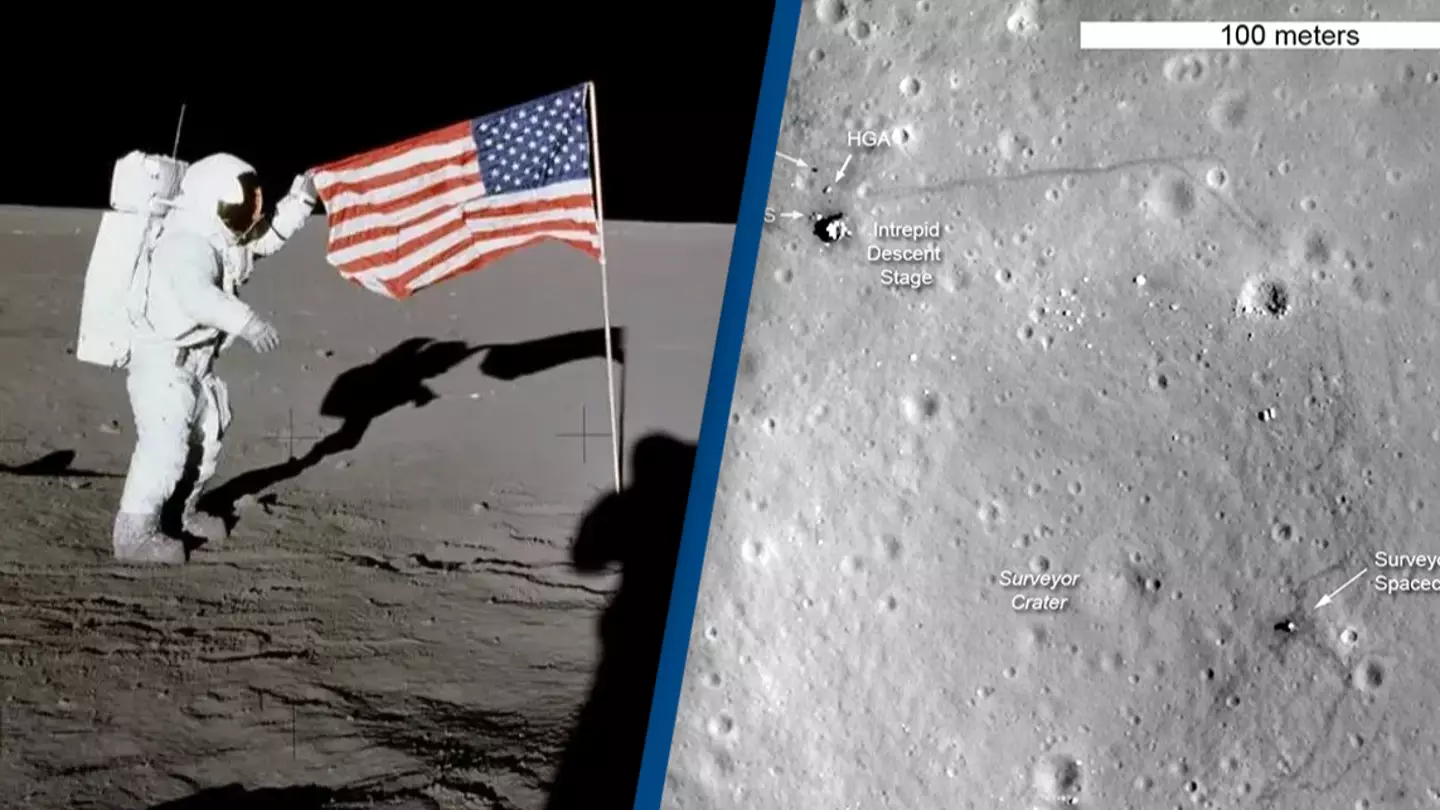
A space expert has revealed exactly how many of the six USA flags Nasa believes are still standing on the moon.
On July 21 1969, Neil Armstrong and Buzz Aldrin became the first and second men to walk on the Moon.
To mark the success of their Apollo 11 mission, the pair planted a pole seven inches deep into the lunar surface before raising up and saluting a nylon US flag.
It’s said tha Nasa had been inspired to have its astronauts plant a flag on the first landing upon hearing former President Richard Nixon’s inaugural address in January 1969.
Since then, five more American banners have been erected on the moon – one for each US Apollo landing.
But what has happened to the six markers over the years and are any of them still standing?
According to astrophotographer Robert Reeves, not all have stood the test of time.
.jpg)
LRO has captured images depicting the shadows of three Moon-based flags. (Nasa)
Taking to YouTube to share his expertise, the astronomy expert began by explaining why it is so difficult to pinpoint the fate of these pennants.
“The Moon is about a quarter million miles away. The smallest objects on the Moon that can be seen with any Earthbound telescope, even the largest research telescope, are only a little under a mile across.
“Since the flags left on the Moon by the Apollo astronauts are only about four feet wide, unfortunately, they’re a thousand times smaller than what we can spot from the Earth.
“Not even the powerful Hubble Space Telescope can see the flags.”
Though we can’t see the flags from Earth, there is a way that Nasa can track whether they’re still standing, says Reeves.
Introducing Nasa’s Lunar Reconnaissance Orbiter (LRO): a robotic spacecraft that has orbited the Moon since 2009.
The space agency has revealed that in recent years LRO has captured images showing the shadow of flags posted on the Apollo 12, 16 and 17 missions.
So three of the six are thought intact, but what about the others?
.jpg)
The original flag erected in 1969 is no longer standing. (Bettmann/Contributor/Getty)
Unfortunately, LRO has been unable to locate the makers at the Apollo 14 and 15 sites.
“Scientists believe those flags weren’t just bleached, but their nylon was completely disintegrated by solar ultraviolet radiation,” Reeves explained in his YouTube video.
Therefore, the status of the 1971 Apollo 14 and 15 flags remains inconclusive.
The expert then went on to reveal the fate of the first banner planted by Armstrong and Aldrin.
The moonwalkers placed the Apollo 11 flag 27 feet from the Lunar Lander Eagle’s centerline.
Thus, the flagpole didn’t withstand the rocket exhaust of liftoff, writes Celestron.
The good news is that the nylon flag could one day be recovered as experts believe it would have been preserved by being buried beneath moon dust.
However, as the last crewed Nasa Appolo mission to the moon was in December 1972, it could be some time before the hypothesis is proved correct.
Featured Image Credit: NASA

Only five percent of the ocean has been explored… and with ‘death pools’ discovered on the floor of the Red Sea, I understand why.
OK, obviously the potential that something scary lurks in the deepest darkest parts of the ocean isn’t what is preventing mankind from exploring just shy of 70 percent of the planet.
But, I’m sure it won’t help.
The deep sea holds many frightful fish like the fangtooth, gulper eel, goblin shark, vampire squid and anglerfish, but none are more terrifying than the unknown.
With those beasts you at least know what you face – OK, the vampire squid isn’t really that scary but sounds it.
Well, research is being carried out by scientists looking into the bottom of the Red Sea, which is located in the Middle East between Africa and Asia.
A research team sent divers and probes down to explore, but what they actually uncovered was ‘death pools’.

Fangtooth fish can be found at the bottom of the ocean… or at the Natural History Museum in London, where this one was on display (Dan Kitwood/Getty Images)
Just the name of them sends chills down your spine, but what are they?
Discovered at the depth of the sea inlet, part of the Indian Ocean, they are holes that go beyond the sea bed and they hold no oxygen at all and are extraordinarily salty, so most life can’t survive there.
Why is that frightening? Well, there are opportunistic predators that lurk there ready to snap up breakfast, lunch and dinner – if any bamboozled creatures happen upon them.
Professor Sam Purkis, chair of the Department of Marine Geosciences at the University of Miami, explained fish that stumble into the brine pools are ‘immediately stunned or killed’, and predators camp out near the holes to ‘feed on the unlucky’.
But it turns out the discovery of these chilling, mysterious trenches hold vital information into life on Earth as we know it.
Purkis said: “Our current understanding is that life originated on Earth in the deep sea, almost certainly in anoxic – without oxygen – conditions.

The Red Sea pictured from space (Getty stock image)
“Studying this community hence allows a glimpse into the sort of conditions where life first appeared on our planet, and might guide the search for life on other ‘water worlds’ in our solar system and beyond.”
So unearthing these pools will actually aid in space exploration.
What also offers a great insight is into ‘life before life’ is the fact that there are so few living things in these pits, meaning we have a rare window into the distant past.
He added: “Ordinarily, these animals bioturbate or churn up the seabed, disturbing the sediments that accumulate there. Not so with the brine pools. Here, any sedimentary layers that settle to the bed of the brine pool remain exquisitely intact.”
I’m sure we’re going to be hearing a lot more about these death pools, and as long as I’m not exploring myself then… bring it on nature.
